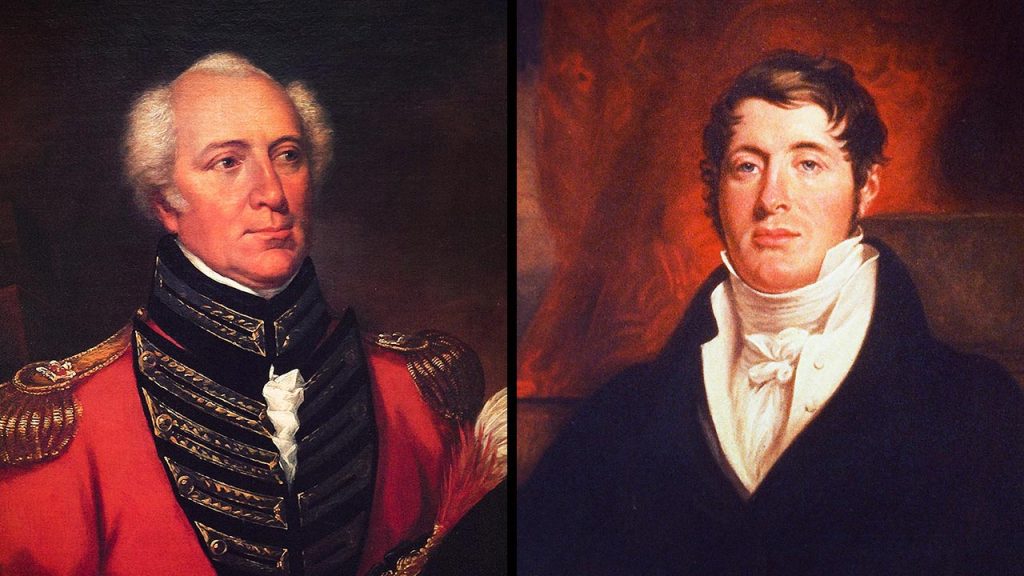Does the guy praise you in public, only to whisper ‘child-molester’ behind your back? Is he also an incompetent jackass who criticizes everything you do but is incapable of owning his own mistakes?
If the answer is ‘yes’, take heart because William Farquhar had such a boss too. His name was no other than Sir Stamford Raffles—full-time national hero and part-time sociopath.
Although Raffles is celebrated for ‘founding’ modern Singapore, historical records show that he was also an asshole, a hypocrite, a pathological liar, a pimp, and a moron who was incapable of managing a Gong Cha outlet, let alone Singapore.
This is the conclusion that readers may draw from Nadia H. Wright’s recently-published book “William Farquhar and Singapore: Stepping out from Raffles’ Shadow”. By celebrating Raffles’s deputy William Farquhar, Ms Wright inadvertently sheds new light on just how much of a prick Singapore’s founder was.
To start, we’re told that it was Farquhar who built Singapore into a successful city-state, not Raffles. Hard to argue against this thesis since Raffles was only in Singapore for no more than 31 days in 1819. He left soon after the flag-raising and left Farquhar holding his baby.
Apparently, he had a habit of doing this. In the words of one contemporary, Raffles was “the man who sets a house on fire and then runs away.”
In lieu of money or resources, he sent bureaucratic obstacles and bitchy letters. When Farquhar needed supplies for Singapore, Raffles forbade him from trading with the closest port of Penang because he had a personal beef with the port’s governor.
He also forbade Farquhar from hiring new staff while demanding more paperwork for every commercial dealing in Singapore, forcing Farquhar to use his own salary for HR.
While Farquhar struggled to make Singapore happen, Raffles was busy backstabbing him. He wrote letters to their superior, Lord Hastings, alleging that Farquhar had overspent on public works, under-spent on defence, and failed to follow his instructions properly. He also claimed full responsibility for Singapore’s growing success, while blaming Farquhar for ‘any irregularities or inconvenience’. According to Raffles, everything good about Singapore was thanks to Raffles, while everything bad was Farquhar’s fault.
In 1820, Raffles even accused Farquhar of wanting to take leave too often and tried to remove him. No evidence was found to support Raffles’ claim of chao keng.
Despite these difficulties, Singapore was a thriving success by the time Raffles returned in 1822. Thanks to Farquhar’s capable administration, Singapore’s trade had already surpassed Malacca’s and it was fast becoming ‘the favourite rendez-vous’ for trading ships in South East Asia.
However, Raffles’ return to Singapore marked the start of discord, incompetence and eventually, the scandalous dismissal of Farquhar.

He also abolished the military’s commissariat (cookhouse) and left many of the soldiers without food. When Farquhar tried to intervene by getting the officers to buy food in bulk, Raffles accused him of sabotage.
Indeed, Colonel Farquhar’s occasional opposition to Raffles’ stupidity would mark the beginning of the end for him. Taking Farquhar’s criticisms as insubordination, Raffles schemed to have Farquhar removed. Writing to the higher authorities in India, he made a buffet of baseless allegations against Farquhar, accusing him of corruption, favouritism, misuse of public funds, slavery, incompetence and even promoting cockfighting.
These allegations were simply untrue. Farquhar never promoted ‘cockfighting’, merely allowed it during certain Malay festivals. He never encouraged slavery either, but only opposed an outright ban out of respect for the Sultan’s household.
As for the allegations of corruption and mismanagement, Ms Wright was unable to find any evidence that it ever happened. Hence, I can only conclude that Raffles was lying to undermine Farquhar out of spite and to obtain sole credit for Singapore’s success.
Why?
Likely because Raffles harboured political ambitions back home in London and he needed the glory.
Unfortunately, the higher authorities in India believed Raffles’s Fake News and did not conduct a thorough investigation. As a result, the man most responsible for making Singapore into a commercial success was dismissed from his job and forcibly retired to Scotland, never to hold another post.
All the while, Raffles’ hypocrisy continued unabated. He went on condemning Farquhar’s ideas to all and sundry while copying them to great result in Singapore.
This is just a brief summary of Raffles’ shitty behavior and you can find a much more thorough account in Ms Wright’s book. However, it’s not illegal to be an asshole, and office politics in the East India Company should surprise no one.
What in fact should really condemn Raffles to history’s loony bin is not his incompetence or his numerous dick moves, but his crimes prior to 1819.

Evidence for this can be found in academic Syed Hussein Alatas’ book, ‘Raffles: Schemer or Reformer’.
During his Java governorship, Raffles appointed his friend Alexander Hare as the governor of Banjarmasin (a.k.a modern-day Borneo). The idea was to establish a profitable British outpost, but the only thing Alexander Hare established was a harem of women to have sex with.
You see, Alexander Hare was a pervert with an insatiable appetite for Malay women, and Raffles was his pimp.
Using his authority as the governor of Java, Raffles transported 462 women to Borneo at Hare’s request. Of that 462, some were convicts but 245 women were never sentenced for any crime, but were simply kidnapped for ‘bad conduct’ and forcibly moved to Borneo.
They were supposed to provide ‘labour’ for the local economy, but their real purpose was to satisfy Hare’s ‘unbridled passion for women’. Most of these ladies lived in houses next to Alexander Hare’s massive residence until the Dutch took back Borneo in 1816, forcing Hare to leave with 40 Malay mistresses in tow.
Depending on how generous you are, Raffles is at best a pimp and at worst a kidnapper who forced his victims into a form of ‘slavery with benefits’. You could argue that he acted according to the morals of his time, but even this line of defence is rather dubious. His British contemporaries in Java were disgusted and many refused to seize women on his behalf.

Which begs the question, how did we come to celebrate a lying pimp as our national hero? And what should we do if our country’s founder is a monster?
The answer to the first question is relatively simple: Raffles married well. Following his premature death at the age of 44, his widow Sophia Raffles wrote a bestselling biography of her late husband. The book was a tissue of lies and bullshit, but it cemented Raffles’ reputation as a adventurous visionary.
At the same time, the British imperialist PR machine needed a hero and found a convenient candidate in Raffles. Thus, Lady Sophia’s falsehoods were repeated ad nauseam until everyone forgot the truth.
Our own government in Singapore probably carried on this charade because it saw little profit in rewriting history. After all, the PAP ruling establishment gained power through negotiation with the British, and knocking Raffles off his pedestal would serve no purpose except to undermine its own authority. Thus, Raffles was allowed to stand unchallenged.
So, as the bicentennial approaches, how should we deal with Raffles the Monster?
There is no easy answer to this question. I, for one, do not believe that we should follow the example of Zimbabwe or South Africa by tearing Raffles off his smug pedestal and throwing him into the river. However big a douchebag he was, amnesia is not the answer.
Destroying Raffles’ legacy entirely is like throwing the baby out with the bathwater. He might have been a asshole, but many of his principles remain sound. His belief in free trade is still integral to Singapore’s economy, even though legalising Opium has not improved as a policy idea after 200 years.
Instead, these recent revelations about Raffles are an opportunity for Singapore to reconsider its politics. So much of our history is afflicted with ‘Great Man Syndrome’. Our achievements are attributed not to the efforts of a united citizenry, but to singular brilliance of Great Men like Raffles, Lee Kuan Yew or even Lee Hsien Loong.
Everything good that happened to Singapore is credited to the heroes, and we choose to ignore our own part in nation-building. As a consequence, we overestimate their ability to shape the course of fate and underestimate our own agency.
The curious case of Raffles shows that no man is truly as capable as the history textbook claims. This ‘great’ founder was an arse who lived off the talents of his subordinates and contributed nothing except vague ideas and snarky correspondence.
Do with this information what you will. But if we’re going to celebrate him, let us at least recognize the truth: He was a two-faced, machiavellian hustler, not some enlightened saint who single-handedly turned Singapore into a success.
That success rightly belongs to Colonel Farquhar, the Bugis princes, Chinese planters and other ordinary Singaporeans who toiled to make the island into a nation.






